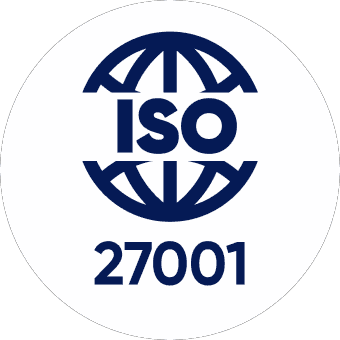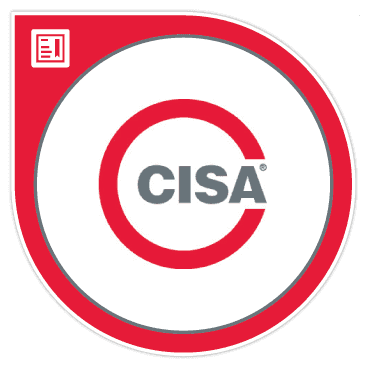Retaining clients has become a top priority for businesses across industries, and for good reason. Keeping clients satisfied is crucial for group health insurance providers, where the quality of service directly affects employee well-being. While attracting new customers is important, retaining existing ones can have a far more significant impact on profitability. Even a slight increase in retention—around 5%—can significantly boost profits, ranging from 25% to 95%. This makes client retention not just a strategy but a cornerstone of business success.
However, retaining clients goes beyond offering quality services. It requires a strategic approach, especially in a highly regulated industry like insurance. Below, we’ll explore five proven strategies to help group health insurance providers increase client retention, focusing on how tools like HRMS Sync can enhance service delivery and satisfaction.
Provide Seamless and Personalized Service
One of the most significant pain points for clients is the inefficiency in service delivery. When clients have to manually send updates about employee status, changes—like new hires, terminations, or changes in dependent information—slow down processes like claims processing and policy updates. The lag in getting updated employee data frustrates the client and jeopardizes the services' accuracy.
HRMS Sync can be a game-changer by automating employee data exchange between the client's HR system and the insurance provider’s systems. With the capability of integrating with over 70 HRMS platforms, HRMS Sync ensures that employee data is always up-to-date, accurate, and securely transferred. This reduces delays and errors in claims processing and policy management, providing a seamless experience for the client.
Proactive Communication and Support
Retention primarily influences how well service providers maintain communication with their clients. Regular touchpoints that go beyond the transactional aspects of the service can create a stronger relationship. Instead of only reaching out when there’s an issue, proactive communication—like checking in on the client’s needs, informing them of new product updates, or offering insights into how they can improve their insurance offerings for their employees—goes a long way.
Implementing automated systems like HRMS Sync streamlines the data exchange process and enables more proactive communication. With access to real-time employee data, insurance providers can offer timely recommendations based on the latest information. For instance, insurers can proactively suggest adjusting an employee’s coverage if their family status changes.
Tip: Be sure to personalize your communications, using insights from the HRMS data to offer tailored recommendations that show you’re invested in the client’s unique needs.
Offer Flexible and Customizable Solutions
Another effective way to boost client retention is by offering flexible and customizable service options. Group health insurance is not a one-size-fits-all solution. Each client may have different needs, whether coverage for a more significant number of dependents, specific employee benefits, or wellness programs tailored to their workforce.
HRMS Sync allows you to customize data fetching models for each client, ensuring that you’re only pulling the data that’s relevant to them. This flexibility makes it easier to offer personalized insurance plans that adapt to the client’s changing workforce and evolving needs. The ability to sync real-time data also means you can make quick adjustments to policies as employee statuses change, helping your clients offer the best possible benefits to their employees.
Prioritize Data Security and Compliance
In an industry as highly regulated as insurance, compliance and data security are top concerns for clients. They need to trust that their sensitive employee information is handled with the highest levels of security and that their vendor complies with legal standards. Any breach of this trust can result in client dissatisfaction and legal ramifications.
HRMS Sync addresses this by providing encryption to protect data during transmission. Additionally, it offers built-in compliance features that help ensure your systems meet industry standards, allowing your clients to rest easy knowing their data is secure. By prioritizing data security, you protect your business and build long-lasting trust with your clients, which is crucial for retention.
Continuously Improve Service Efficiency
Improving overall service efficiency is one of the most critical factors in retaining clients. Clients want to know they can rely on their insurance provider to process claims quickly, provide accurate information, and handle their needs without unnecessary delays. Poor service experiences—such as delays in claim processing due to outdated employee data or mismanagement of benefits—can push clients to seek alternatives.
With HRMS Sync, service providers can significantly reduce claim processing times by ensuring they always have the latest employee data. For example, one group health insurance provider saw a 40% reduction in claim processing times after implementing HRMS Sync. By improving the efficiency of service delivery, you’ll meet and exceed your client’s expectations and build a reputation for reliability and responsiveness.
Pro Tip: Track critical metrics like claim turnaround times and client feedback regularly to ensure continuous improvement in service efficiency.
Build Long-Term Relationships Through Employee Wellbeing Initiatives
In the group health insurance industry, retention doesn’t just depend on the coverage provided and how well you support the overall well-being of your client’s employees. Offering value-added services focusing on preventive care, mental health support, wellness programs, or chronic disease management can position you as a partner in the client’s long-term employee health strategy rather than just a service provider.
This shift from providing reactive services—processing claims when an employee gets sick or injured—to offering proactive health and wellness solutions can differentiate your business. Clients are more likely to stay with a provider offering a comprehensive health approach, not just insurance coverage.
HRMS Sync enables you to build wellness programs that align directly with real-time employee data. For instance, if the system detects a spike in sick days across an organization, your team can proactively reach out with targeted wellness initiatives or offer specific health screenings. By leveraging data for predictive insights, you can help your clients keep their workforce healthier and happier, enhancing their loyalty to your business.
Enhance Client Onboarding Experiences
First impressions matter, especially when it comes to client onboarding. A smooth, well-structured onboarding process can set the tone for the entire client-vendor relationship, while a clumsy or slow start can leave a lasting negative impression. Many group health insurance providers struggle with onboarding because they must gather significant employee data before clients can use their services. This often involves back-and-forth emails and delayed data transfers, which frustrate clients and increase the risk of early churn.
HRMS Sync can streamline this process by allowing instant access to the client’s employee data. Instead of relying on the client to manually upload CSV files or share spreadsheets of employee information, you can use HRMS Sync to pull real-time data directly from the client’s HRMS system. This speeds up the onboarding process, reduces errors, and immediately ensures that your team has accurate information.
By making onboarding quicker and more efficient, you’ll impress your clients and establish a robust, long-lasting relationship. The easier it is for your clients to get up and running, the less likely they are to switch providers.
Measure and Optimize Client Satisfaction Regularly
One often overlooked yet critical factor in client retention is the importance of measuring client satisfaction on an ongoing basis. Relying on annual surveys or occasional feedback is insufficient to fully understand how your clients feel about your services. By actively measuring satisfaction throughout the client lifecycle, you can catch potential issues early and address them before they lead to churn.
This can be done through Net Promoter Score (NPS) surveys, regular check-in calls, or gathering feedback after each interaction. Data from these touchpoints can provide valuable insights into how well your service delivery aligns with client expectations and where there might be room for improvement.
Integrating HRMS Sync into your operations adds another layer of insight. By continuously monitoring the data flow between your system and the client’s HRMS, you can identify potential friction points, such as delays in data updates or discrepancies in employee information, which could affect satisfaction. With real-time data on hand, you can quickly resolve these issues before they impact your relationship with the client.
Pro Tip: Set up automated reminders for satisfaction surveys after key touchpoints, such as after onboarding, policy renewals, or major claims, to ensure you’re constantly gathering fresh feedback.
Leverage Data to Offer Predictive Solutions
Predictive analytics is essential for businesses anticipating customer needs and offering proactive solutions. In group health insurance, anticipating when clients might need to adjust their policies or when a surge in claims could be expected can help you position your services more effectively. This showcases your commitment to being a proactive partner and strengthens your relationship with clients who value your approach.
HRMS Sync gives you access to real-time employee data, enabling predictive analytics to inform your product offerings and client recommendations. For example, if your data shows that a client’s workforce is growing rapidly, you can suggest coverage adjustments before they realize the need. On the other hand, if the data shows an increase in terminations, you can offer insights on how to adjust the policy to avoid over-coverage and reduce costs for the client.
This kind of data-driven service offering is helpful and makes you an invaluable asset to your clients. It enhances retention because clients know you are always one step ahead in meeting their needs.
Conclusion: The Future of Client Retention Lies in Data-Driven Strategies
Retaining clients in the group health insurance industry requires excellent service, proactive communication, and innovative solutions that address the client’s evolving needs. In today’s fast-paced world, companies expect their service providers to be as efficient and flexible as they are, and the tools they use play a critical role in meeting these expectations.
By integrating HRMS Sync, group health insurance providers can eliminate manual data sharing inefficiencies, improve service delivery speed and accuracy, and offer personalized, data-driven solutions that resonate with clients. Each of the strategies mentioned—from enhancing onboarding and proactively communicating to ensuring data security and offering predictive insights—can help strengthen client relationships and improve retention rates.
Ultimately, the key to client retention lies in continuously improving your service offerings and using tools that enable you to meet your client’s needs more effectively. HRMS Sync’s real-time data integration and customizable features position you as a forward-thinking, client-centered provider, helping you retain clients and build long-term loyalty. For more information on integrating your client’s HRMS with HRMS Sync, contact support@tartanhq.com.
Tartan helps teams integrate, enrich, and validate critical customer data across workflows, not as a one-off step but as an infrastructure layer.











